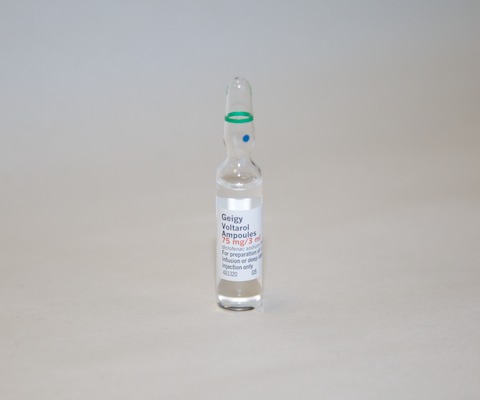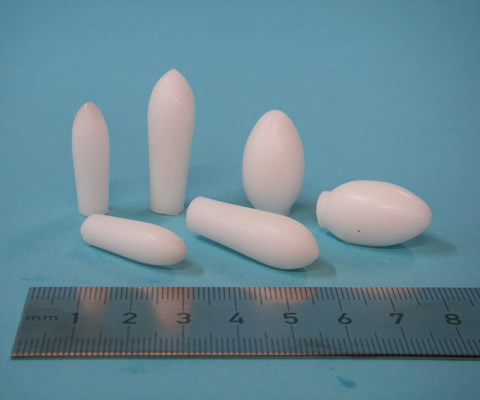Overview
Question: What do you think is the most common route of administration of NSAIDs?
Click here for the answer.

|
Excipients This term covers anything else in the preparation that is not the active ingredient:
Some patients may have sensitivities or allergies to some of these ingredients, e.g. they may be lactose intolerant or allergic to specific dyes. |
Question: What do you think is the most common route of administration of NSAIDs?
Answer: The most common route of administration is the oral route. However, these drugs can be given by a wide range of routes:
- Oral
- Parenteral
- Rectal
- Topical
In addition to active ingredients, tablets often have other ingredients, known as excipients.
Click on the Oral tab for more information.

Question: What do you think is the most common route of administration of NSAIDs?
Answer: The most common route of administration is the oral route. However, these drugs can be given by a wide range of routes:
- Oral
- Parenteral
- Rectal
- Topical
In addition to active ingredients, tablets often have other ingredients, known as excipients.
Click on the Oral tab for more information.
|
Excipients This term covers anything else in the preparation that is not the active ingredient:
Some patients may have sensitivities or allergies to some of these ingredients, e.g. they may be lactose intolerant or allergic to specific dyes. |
Oral
Oral preparations are available in the following forms:
Click on the Parenteral tab for more information.

Reproduced with permission from Libby Welch, Wellcome Images
|
Tablet This is the preparation that nearly everyone is familiar with. They are made by compressing powder or granules of the drug together to form the tablet. They may then have a coating added, such as a sugar or a film coating. These coatings serve a number of purposes:
Enteric coating is a slightly different type of coating, which delays breakdown of the tablet so the stomach is not exposed to the drug. This specialized coating protects the drug from stomach acid and only dissolves when the pH of the surrounding fluid rises. An example is diclofenac enteric-coated (e/c) tablets. All tablets, regardless of the type of coating, need to disintegrate before the drug can be absorbed. This can be a problem for patients with short-bowel syndrome, who should not receive modified-release preparations, and may be better off with other formulations such as liquids. If they have a stoma, then they quickly let you know if the tablet is not being broken down. |
|
Capsule Capsules contain the drug powder or granules within a gelatin shell. This shell can be either hard or soft, although for NSAIDs the most likely is a hard shell, e.g. celecoxib. Soft gelatin capsules can also contain liquids, e.g. cod-liver oil capsules. Gelatin is an animal product, so may not be acceptable to all patients. |
|
Soluble tablet Soluble tablets can be useful for patients who struggle to swallow tablets or capsules. They are less suitable for children because the dose they contain is usually an adult dose. The tablet may contain high levels of sodium, particularly if it is an effervescent preparation. Examples include piroxicam and diclofenac. |
|
Orodispersible tablet Orodispersibles are a relatively new type of preparation, but are becoming more popular. The drug is contained in a freeze-dried film and dissolves very easily in a little saliva, or water. Ibuprofen is available in this formulation. |
|
Liquid preparations Liquid preparations are usually developed to enable children to take the drug, so the strengths of the preparations reflect this. They can be clear, in which case they are either syrups or solutions, or cloudy, i.e. suspensions. Nowadays, however, problems with dental caries mean that very few syrups actually contain sugar. It is important with liquid preparations that the dose is measured carefully using the appropriate measure, such as an oral syringe or 5 ml spoon. The most well-known preparation is likely to be ibuprofen, which is widely used for children, however, other drugs, such as nabumetone and mefenamic acid, are also available as suspensions. |
|
Sustained-release Some preparations, tablets or capsules mainly, are described as sustained-release or modified-release. This enables the patient to take drugs once or twice a day that normally they would have to take several times a day, which is far more convenient. Examples would be indomethacin and dicloflenac. There are several ways of modifying the release of the drug, such as:
However, in nearly all cases, crushing the preparation means that it is no longer modified-release, therefore, these are not suitable for patients who struggle to swallow tablets or capsules, or who rely on enteral feeding tubes. |
Parenteral
There are relatively few NSAIDs available that can be administered parenterally, the BNF 67 lists just four [8]:
- Diclofenac
- Ketorolac
- Tenoxicam
- Parecoxib
Each of these can be administered either intravenously (IV) or intramuscularly (IM). However, they are licensed to be used for only a few days (2 or 3 at most), which can limit their usefulness.
There are often specific administration instructions, e.g. IM diclofenac must be given by deep IM injection, into the gluteal muscle, which you need to bear in mind when using these drugs.
As a group of drugs they are not highly water soluble, so excipients may be included, e.g. ethanol or ethylene glycol.
Examples include Diclofenac, i.e. Voltarol® 75 mg/3 ml or Dyloject® 75 mg/2 ml, for a maximum of 2 days.
Click on the Rectal tab for more information.

Rectal
The rectal route is not used as often in the UK, as it is abroad.
It can be very useful as an option when a patient is unable to take a drug by mouth and to avoid the parenteral route.
There is a small range of drugs available by this route, e.g. indomethacin and ketoprofen.
Click on the Topical tab for more information.

Topical
Topical preparations may be administered:
- To the skin
- To the eye
|
To the skin Topical treatment can be useful for musculoskeletal pain such as osteoarthritis. A relatively small amount of drug is absorbed through the skin, so, in theory, should cause less of a problem than drugs given systemically. A range of formulations is available, such as:
|
Topical preparations may be administered:
- To the skin
- To the eye
|
To the skin Topical treatment can be useful for musculoskeletal pain such as osteoarthritis. A relatively small amount of drug is absorbed through the skin, so, in theory, should cause less of a problem than drugs given systemically. A range of formulations is available, such as:
To the eye NSAID eyedrops, such as ketorolac and flurbiprofen, are used after eye surgery to reduce pain and inflammation. |